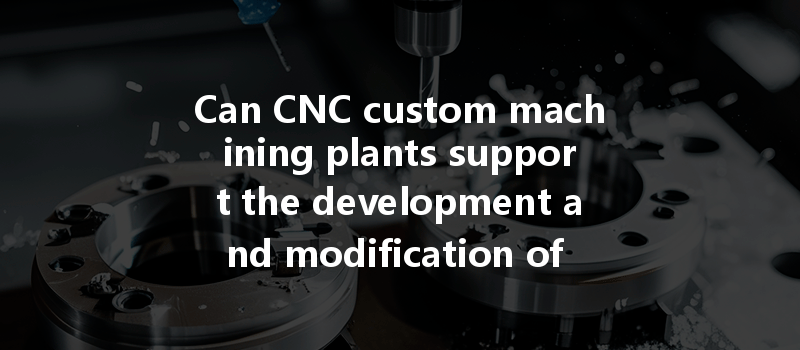: The Future of Customization
Did you know that 70% of manufacturing companies believe that customization is key to staying competitive? In an era where mass production is increasingly being challenged by the demand for unique, tailored solutions, CNC custom machining plants are stepping up to meet this challenge. The capability to develop and modify customized samples has become crucial in sectors ranging from aerospace to medical devices.
In this extensive blog post, we’ll dive deep into the world of CNC (Computer Numerical Control) custom machining, exploring its advantages, processes, and how these plants cater to personalized requirements. We will provide detailed solutions and technical insights to highlight how CNC custom machining can support the development and modification of tailored sample designs.
—
Understanding CNC Custom Machining
What is CNC Custom Machining?
CNC custom machining refers to the process of using computer-controlled machines to create customized parts or components. Unlike traditional machining processes, CNC machining promotes high precision and repeatability, making it ideal for producing complex designs that meet specific requirements. What sets CNC custom machining apart is its ability to tailor parts to the unique needs of clients—be it in terms of shape, material, size, or finishes.
Why Custom Machining is Essential?
The CNC Custom Machining Process
Understanding the CNC custom machining process is vital for both manufacturers and clients looking to utilize this technology effectively. Below are the key stages involved:
Every custom machining project begins with a concept or an idea. Designers use CAD (Computer-Aided Design) software to create a detailed digital model of the tailored sample. This is often the most crucial step, as it determines how well the final product will meet specifications.
Key Tips:
The choice of materials impacts both the design and the function of the final product. CNC custom machining can accommodate a diverse range of materials, including metals, plastics, wood, and composites.
Guidelines for Material Selection:
Once the design and material are finalized, the next step is to convert the CAD model into code that the CNC machine can interpret. This process often involves CAM (Computer-Aided Manufacturing) software.
Best Practices:
During the machining process, the raw material is shaped into the desired component using different techniques operated by CNC machines. Common methods include milling, turning, and drilling.
Machining Techniques:
Quality assurance is paramount in CNC custom machining. Measuring and testing procedures must be employed to ensure the final product meets the required specifications.
Quality Control Tips:

Addressing Common Challenges in Custom Machining
While CNC custom machining presents incredible advantages, there are challenges that must be managed effectively. Below are common challenges along with their solutions.
Challenge: The setup costs for CNC machining, including programming and tooling, can be high.
Solution:
Challenge: Some designs may not be feasible due to CNC machining limitations.
Solution:
Challenge: The process—from concept to finished part—can be time-consuming.
Solution:
Benefits of CNC Custom Machining for Tailored Sample Designs
Innovations and Future Trends in CNC Custom Machining
As technology evolves, so does CNC custom machining. Here are some upcoming trends that could further enhance the capabilities of CNC machining:
Automation will play a significant role in enhancing efficiency and reducing labor costs in the CNC custom machining sector. Integrated robotics with CNC machines can lead to improved speed without sacrificing quality.
The hybrid approach of combining CNC machining with additive manufacturing technologies opens new possibilities for customizing designs previously thought impractical.
The Internet of Things (IoT) allows for real-time monitoring and control of CNC machines, enhancing production efficiency and reducing downtime in case of malfunctions.
: Embracing Customization Through CNC Machining
In conclusion, CNC custom machining plants not only support the development and modification of tailored sample designs, but they also embody the future of manufacturing. Their precision, versatility, and capabilities for rapid prototyping make them an invaluable asset in today’s competitive landscape.
Starting from the design phase and extending through quality control, each step of the CNC custom machining process is lined with opportunities for innovation and efficiency. Businesses that embrace these advanced technologies and methodologies will not only satisfy the current demands for customization but will also be well-prepared for future industry shifts.
As the landscape of manufacturing continues to evolve, understanding and leveraging the power of CNC custom machining offers a strategic advantage that is worth considering for any modern manufacturer striving for excellence.






